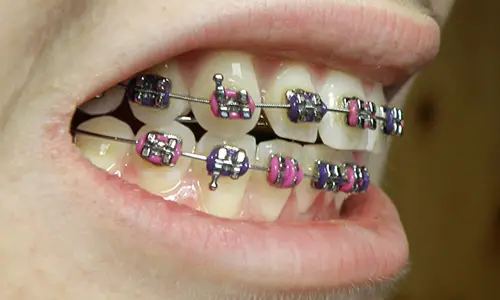Everybody wants to flash a brilliant smile revealing perfect teeth. However not all mouths have been gifted with perfectly aligned teeth. Crooked teeth and a misaligned bite are far more common than the perfect bite. Growing children become acutely conscious of crooked teeth, over bites and under bites. These conditions may lead to low self-esteem in an adolescent.
Fortunately there is a relatively simple, though slightly trying, and remedy to this malaise. In a world that is placing increasingly greater value on faultless good looks more and more young people are wearing braces to straighten their teeth.
FACT 1: Dentists advise the patient when orthodontic intervention is indicated. An orthodontist is the specialist who corrects irregularities in the mouth.
FACT 2: The orthodontist examines the patient and takes an impression of the teeth. He then advises x Rays of the mouth and head and takes photos of the face and teeth. Once all these preliminaries are completed, the dentist will discuss the intervention best suited to the individual needs.
FACT 3: Different types of braces are available. They vary slightly in the pressure applied, the duration of use and the materials and colours employed. Basically the work all braces do is to apply pressure on the misaligned teeth and force them to move in the desired direction.
FACT 4: Braces are composed of bands, brackets, arch wires, rubber rings and rubber bands. Bands may be stainless steel, clear or tooth coloured. They are cemented to the teeth with dental bonding. The bands anchor the brackets. The brackets are small squares that are bonded to the front of each tooth. They are the handles that hold the arch wires. Brackets too could stainless steel or tooth coloured ceramic. Once the bands and brackets are I place, arch wires are attached to the brackets. The amount of pressure applied by the arch wire is regulated by the tiny rubber bands called ligatures that hold the arch wire to the bracket.
FACT 5: Face bow headgear is a variation of the basic brace. In less severe cases, removable plastic plates can be used. Mini braces are smaller and one of the latest advancements in braces technology.
FACT 6: The length of time braces need to be worn varies according to individual needs. The health of the teeth and gums and the supporting gums, the distance the teeth need to move and the amount of room available are the determinants of the period of braces use.
FACT 7: Once the braces have been fitted the patient will need to visit the orthodontist regularly to adjust the braces. These adjustments are not painful, but do leave the mouth sore and uncomfortable. Pain killers are prescribed to alleviate these conditions.
FACT 8: Orthodontic treatment is available for both children and adults. The process varies slightly for adults. Additional contrivances may be required for effective bite correction or teeth straightening in adults. The process takes longer as adult bone is no longer growing.
FACT 9: Wearing braces does not affect daily life. Besides taking care of oral hygiene and avoiding hard foods there are no restrictions. A person who wears braces may participate in the sport of his or her choice. If there is any danger of being hit on the face a special mouth guard should be worn.
FACT 10: Braces continue to be affordable only by the well to do. Health insurance rarely covers tooth straightening and correction of alignment in the mouth. The basic cost is about $ 5000, but this amount varies among different dentists and according to area.











Leave a Reply